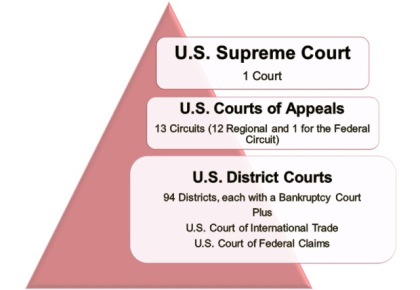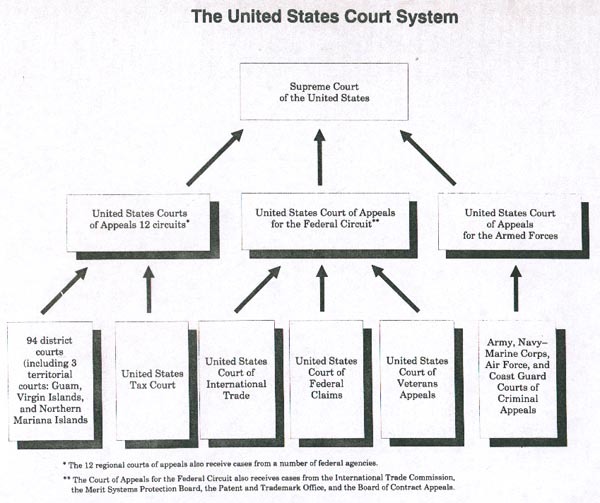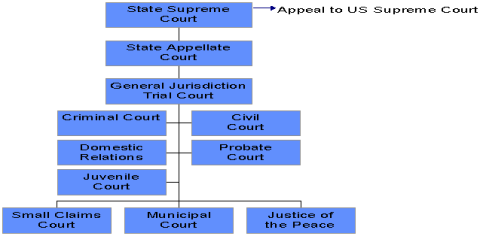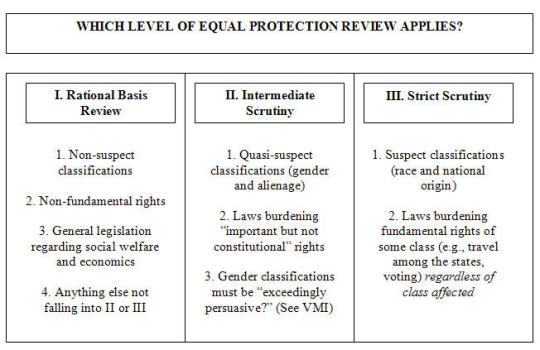
BA 390 - part A
Microsoft Word document [76.3 KB]
The Spring 2015 students music on Soundcloud
Milton Tan (one of spring 2015 students) took a ton of photographs on our field trip. He produced the most amazing video to capture the highlights.
1 - Introduction to Law - Key Concepts
3 key ideas about Business Law
1. Knowledge is Power
2. Law is important to successfully navigate "Life"
3. Law is fascinating! (well at least to me, anyway! but y'all know I'm a geek)
Sources of Law
Federalism: A double-layered system of government, with the national and state governments each exercising important but limited powers
US Constitution: The supreme law of the land
1. Establishes the national government of the US with its 3 branches (legislative, executive, judicial)
2. Creates a system of checks and balances among the branches
3. Guarantees many basic rights to the American people
Statutes: A law passed by Congress or by a state legislature
Common law: binding legal ideas that come from the courts
Stare decisis: The principle that precedent is binding on later cases, literally "let the decision stand"
Court Orders: place binding obligations on specific people or companies (e.g. injunction)
Administrative Law: Regulations are created by government agencies (e.g. FAA)
Treaties: Agreements made by President with foreign nations - must be ratified by 2/3 Senate vote - then, binding on all citizens
Classifications of Law
Criminal Law: Concerns behavior so threatening that society outlaws it altogether
Civil Law: Regulates the rights and duties between parties
Analyzing a Case
Plaintiff: Person who is suing
Defendant: Person being sued
Facts: Background to the lawsuit
Issue: What the court had to decide
Holding: Court's decision
Reasoning: Explains why the court reached its decision
Reverse: Declare the lower court's ruling wrong and void
Remand: Send a case back down to a lower court
Affirm: Uphold a lower court's ruling
Microsoft Word document [78.1 KB]
2 - Business Ethics and Social Responsibility - Key Concepts
Law: Dictates how a person MUST behave
Ethics: governs how people SHOULD behave
Life Principles: Rules by which you live your life. Develop them now, and you will prepared when facing ethical dilemmas in the future
Why bother to act ethically at all?
- Society as a whole benefits from ethical behavior
- People feel better when they behave ethically
- Unethical behavior can be very costly
- Ethical behavior is more likely to pay off
Utilitarian versus Deontological Ethics
Utilitarian Ethics : John Stuart Mill - 1863 - A correct decision is one that tends to maximize overall happiness and minimize overall pain - e.g. risk-management and cost-benefit analyses
Deontological Ethics: Immanuel Kant - The ends do not justify the means - A sense of duty or obligation is the best justification for any action
Stakeholder Ethics
The Shareholder Model: Milton Friedman - Corporations have 2 primary responsibilities:
1. They must comply with the law
2. They must make as much money as possible for shareholders
If stakeholder and shareholder interests conflict, then company should act in best interest of shareholders
The Stakeholder Model: The company must look out for, not only shareholders but also, employees, customers, communities, society, and the environment
Organization's ethical responsibility to its employees - layoffs, outsourcing etc
Organization's ethical responsibility to its customers - customers first
Organization's ethical responsibility to overseas contract workers - industrialization
When, if ever, is lying acceptable?
In some specific circumstances, intentional deception is tolerated
Microsoft Word document [112.7 KB]
3 - Courts, Litigation, and Alternative Dispute Resolution - Key Concepts
3 Fundamental areas of law:
1. Structure of our court system (one federal and one for each state)
2. Litigation: Process of resolving disputes in court through filing claims in court, trying the case, and living with the court's ruling
3. ADR - Alternative Dispute Resolution: Resolving disputes out of court, through formal or informal processes - cheaper and faster than litigation
Mediation: Form of ADR in which a neutral third party guides the disputing parties toward a voluntary settlement - strongest "win-win" potential
Arbitration: Form of ADR in which a neutral third party has the power to impose a binding decision
Trial Courts: Determine the facts and apply to them the law given by appellate courts
Jurisdiction: Court's power to hear a case - There are 2 types:
1. Subject Matter Jurisdiction: Court has authority to hear a particular type of case
2. Personal Jurisdiction: Court has legal authority over the defendant to require the defendant to stand trial, pay judgments, and the like.
Personal Jurisdiction generally exists if:
- Defendant is a resident of the state in which a lawsuit is filed; or
- Defendant files documents in court, e.g. answer to a complaint; or
- Summons is served on defendant (Summons is court's written notice that a lawsuit has been filed against defendant - must be delivered to the defendant when she is physically in the state in which lawsuit is filed); or
- Long-arm statute applies - when someone who does not live in a state but commits a tort, signs a contract, causes foreseeable harm, or conducts "regular business activities" there - minimum contacts - Due Process Clause - International Shoe Co. v. State of Washington
Appellate Courts: Higher courts which generally accept the facts provided by trial courts and review the record for legal errors.
Appellant: Party filing an appeal of the trial verdict
Appellee: Party opposing an appeal
Federal Courts: Established by US Constitution - limited jurisdiction - 2 kinds of cases:
Federal Question Case: Claim based upon US Constitution, federal statute, or federal treaty
Diversity Case: Lawsuit in which the plaintiff and defendant are citizens of different states AND the amount in dispute exceeds $75,000
Litigation
Pleadings: Documents that begin a lawsuit, consisting of a complaint, the answer, and sometimes a reply
Complaint: Pleading that starts a lawsuit - short statement of the facts alleged by the plaintiff, and her legal claims
Answer: Defendant's response to the complaint
Default judgment: Decision that the plaintiff in a case wins without going to trial
Class Action: Suit filed by a group of plaintiffs with related claims
Discovery: allows the two sides in a lawsuit to obtain documentary and other evidence from the opponent before trial - Parties are entitled to discover anything that could reasonably lead to valid evidence
Types include:
- Interrogatories: written questions that opposing party must answer, in writing, under oath
- Depositions: one party's lawyer questions the other party or witness (deponent), under oath
- Production of documents and things: each side may ask the other to produce for inspection and copying
- Physical and mental examination: if condition is relevant
Motion: formal request to the court
Pre-trial motions: Class Action and Summary Judgment
Motion to compel discovery: request to court for order requiring other side to answer discovery
Motion for a protective order: request to court, for good cause shown, where justice requires to protect a party from unreasonable annoyance, embarrassment, oppression, burden or expense
e-discovery: electronic discovery
Summary Judgment: Ruling that no trial is necessary because essential facts are not in dispute
Trial
Adversary System: based on the assumption that if two sides present their best case before a neutral party, the truth will be established
Jury Selection
Right to a jury trial: not always, but generally where money damages are involved (Judge's instructions)
Opening statements: summarize proof lawyer expects to offer, plaintiff going first
Plaintiff's Case
Burden of Proof: Obligation to convince the jury that a party's version of the case is correct
- Preponderance of the evidence: civil suit - plaintiff's version is slightly more likely than defendant's (51-49)
- Beyond a reasonable doubt: criminal case - government, or prosecution, must demonstrate the defendant is guilty beyond a reasonable doubt
Direct examination: when a lawyer asks questions of her own witness
Cross examination: when a lawyer asks questions of an opposing witness
Defendant's Case
Closing argument: both lawyers sum up their case
Deliberation
Verdict
Appeals
Precedent: earlier decisions by a court on similar or identical issues, on which subsequent court decisions can be based
Affirm: to allow a court decision to stand as is
Modify: to let a court decision stand, but with changes
Reverse and remand: to nullify a lower court's decision and return a case to trial
Reverse: to rule that the loser in a previous case wins, with no new trial
Microsoft Word document [123.5 KB]
4 - Constitutional, Statutory, Administrative, and Common Law - Key Concepts
Constitutional Law
The Constitution is a series of compromises about power
Separation of Powers
To limit power - 3 branches (independent and equal) - each a check on the others
Federalism
Limited power - Congress has enumerated powers
Power Granted
Congressional power - Article 1 - creates Congress with 2 houses - Senate and House of Representatives
Interstate Commerce
Commerce clause: gives Congress the power to regulate commerce with foreign nations and among states
"The Congress shall have the power to regulate commerce with foreign nations, and among the several states."
Executive power - Article 2 - basic job of the President is to enforce the nation's laws
3 key powers:
Appointment - of heads of administrative agencies
Legislation - propose bills to Congress - veto power
Foreign policy - conducts nation's foreign affairs - treaties - Commander in Chief of Armed Forces
Judicial power - Article 3 - creates Supreme Court - permits Congress to establish lower courts within federal court system
Federal courts - 2 key functions
- Adjudicating cases: criminal and civil cases
- Judicial review: power of federal courts to declare a statute or governmental action unconstitutional and void
Protected Rights
1791 - Bill of Rights - first 10 Amendments added to Constitution
First Amendment: guarantees rights of free speech, free press, and religion - "Congress shall make no law... abridging the freedom of speech..." - Government may regulate the TIME, PLACE, and MANNER of speech - speech includes symbolic conduct
Fourth Amendment: protects against illegal searches
Fifth Amendment: ensures due process - Due Process and the Takings Clause - "No person shall be ... deprived of life, liberty, or property without due process of law; nor shall private property be taken for public use, without just compensation."
Procedural due process: ensures that before the government takes liberty or property, the affected person has a fair chance to oppose the action - the type of hearing the government must offer depends upon the importance of the property or liberty interest
The Takings Clause: prohibits a state from taking private property for public use without just compensation - A regulation that denies all beneficial use of property is a taking and requires compensation
Sixth Amendment: demands fair treatment for defendants in criminal prosecutions
Fourteenth Amendment: guarantees equal protection of the law - "No State shall ... deny to any person within its jurisdiction the equal protection of the laws."
The Equal Protection Clause: requires that the government must treat people equally - regulations based on gender, race, or fundamental rights are generally void
Citizens United v. Federal Election Commission
Statutory Law
Statutes: Laws passed by Congress or state legislatures
Bill: A proposed statute
Common Law
Judge-made law - legal precedents created by appellate courts - common law evolves in awkward fits and starts because courts attempt to achieve two contradictory purposes: predictability and flexibility
Stare decisis: "let the decision stand" - describes a court's tendency to follow earlier cases - once a court has decided a particular issue, it will generally apply the same rule in future cases
Bystander Rule: The common-law bystander rule holds that, generally, no one has a duty to assist someone in peril unless the bystander himself created the danger - courts have carved some exceptions during the last 100 years, but the basic rule still stands
Administrative Law
Administrative agencies, e.g. FAA, make rules - Congress creates federal administrative agencies to supervise many industries - agencies promulgate rules and investigate and adjudicate cases
Agencies promulgate 2 rules: Legislative and Interpretive
Legislative Rules: have full effect of a statute
Interpretive Rules: Agency's interpretation of what the law already requires
Investigation
Subpoena: An order to appear at a particular time and place
Subpoena duces tecum: requires the person to produce certain documents or things
Adjudication
Adjudicate: to hold a formal hearing about an issue and then decide it
Administrative Law Judge: (ALJ) An agency employee who acts as an impartial decision maker
Microsoft Word document [122.2 KB]
5 - Intentional Torts and Business Torts - Key Concepts
Tort: violation of a duty imposed by the civil law - "wrong" - e.g. libel, negligence, interference with a contract - the injured party must seek compensation
Intentional Torts: involve harm caused by deliberate action
Defamation: concerns false statements that harm someone's reputation
Libel: written defamation
Slander: oral defamation
Element: fact that a plaintiff must prove to win a lawsuit
Elements of Defamation:
1. Defamatory Statement: statement likely to harm another person's reputation
2. Falseness: statement must be false
3. Communicated: To at least one person other than the plaintiff
4. Injury: Plaintiff generally must show some injury
Slander per se: slander cases that involve false statements about sexual behavior, crimes, contagious diseases, and professional abilities - law assumes injury without requiring plaintiff to prove it
(libel too)
Opinion: cannot be proven true or false - generally a valid defense in a defamation suit
Public personalities: less protection from defamation (play in the open) - to win, a public figure or public official must prove actual malice by the defendant
New York Times Co. v. Sullivan
Actual malice: defendant in a defamation suit knew his or her statement was false, or acted with reckless disregard of the truth
False Imprisonment: intentional restraint of another person without reasonable cause or consent
Generally, a store may detain a customer or worker for alleged shoplifting provided there is a reasonable basis for the suspicion and the detention is done reasonably
Battery and Assault:
Battery: harmful or offensive bodily contact - intentional touching of another person in a way that is harmful or offensive
Assault: action that causes another person to fear an imminent battery
Trespass: intentionally entering land that belongs to someone else or remaining on the land after being asked to leave - you don’t have to be aware that the land belongs to someone else - also trespass if you have some object, let’s say a car, on someone else’s property and refuse to remove it
Conversion: taking or using someone’s personal property without consent
Fraud: injuring someone by deliberate deception
Intentional Infliction of Emotional Distress: extreme and outrageous conduct that causes serious emotional harm
Jane Doe and Nancy Roe v. Lynn Mills
Damages
Compensatory Damages: intended to restore the plaintiff to the position he was in before the defendant's conduct caused injury
Single recovery principle: requires a court to settle a legal case once and for all, by awarding a lump sum for past and future expenses
Punitive damages: punish the defendant for conduct that is extreme and outrageous - court must consider 3 guideposts:
1. reprehensibility of the defendant's conduct
2. ratio between harm suffered and the award (generally, not more than 9 times the compensatory award)
3. difference between punitive award and any civil penalties used in similar cases
Tort reform and Exxon Valdez
Economic damages: lost wages, medical expenses, and other measurable losses
Non-economic damages: pain and suffering and other losses that are difficult to measure
Business torts
Tortious interference with a contract: occurs when a defendant deliberately harms a contractual relationship between two other parties
Four elements:
1. contract between plaintiff and a third party
2. defendant knew of contract
3. defendant improperly induced third party to breach contract or made performance of contract impossible
4. injury to plaintiff
Intrusion: (into someone's private life) tort if a reasonable person would find it offensive
Commercial exploitation: prohibits the unauthorized use of another person's likeness or voice for business purposes
Microsoft Word document [130.3 KB]
6 - Negligence and Strict Liability - Key Concepts
Negligence: harm that arises by accident - unintentional
Palsgraf v. Long Island Railroad
5 elements of negligence:
1. Duty of Due Care: defendant has a legal responsibility to plaintiff - each of us has a duty to behave as a reasonable person would under the circumstances
Hernandez v. Arizona Board of Regents
Special duty: Landowner's Liability
- lowest liability - trespassing adults - trespasser is anyone on property without consent - landowner liable only for intentionally injuring him or some other gross misconduct
- midlevel liability - trespassing children - if there is some manmade thing on land that may be reasonably expected to attract children - landowner probably liable for nay harm
- higher liability - licensee - person on property for her own purposes, but with the owner's permission - eg social guest - entitled to warning of hidden dangers that owner knows about (hidden dangers are NOT obvious ones!)
- highest liability - Invitee - person who has a right to be on property because it is a public place or a business open to the public - owner has a duty of reasonable care - owner must conduct inspections of property to make sure no condition is becoming dangerous
Special duty: Professionals
while on the job must act as a reasonable person in her profession
Special duty: Hiring and retention
companies can be liable for hiring or retaining violent employees
2. Breach: defendant breached her duty of care or failed to meet her legal obligations
defendant breaches his duty of due care by failing to behave the way a reasonable person would under similar circumstances
3. Factual cause: defendant's conduct actually caused the injury
defendant's breach led to the ultimate harm
4. Proximate cause: it was foreseeable that conduct like the defendant's might cause this type of harm
refers to a party who contributes to a loss in a way that a reasonable person could anticipate - for defendant to be liable, the type of harm must have been reasonably foreseeable
superseding cause: event that is entirely unforeseeable
res ipsa loquitur: "the thing speaks for itself" - refers to cases where the facts imply that the defendant's negligence caused the harm - dramatically shifts burden of proof from plaintiff to defendant - applies only when
1. defendant had exclusive control of the thing that caused the harm
2. harm normally would not have occurred without negligence AND
3. plaintiff had no role in causing the harm
5. Damages: plaintiff has actually been hurt or has actually suffered a measurable loss
Defenses
Assumption of the risk: a person who voluntarily enters a situation of obvious danger cannot complain if she is injured
Contributory negligence: plaintiff who is even slightly negligent recovers nothing
Comparative negligence: plaintiff may generally recover even if she is partially responsible
Strict Liability
A high level of liability assumed by people or corporations who engage in activities that are very dangerous
Defective products: generally lead to strict liability
Ultra-hazardous activities: defendant engaging in such acts is virtually always liable for resulting harm
New Jersey Department of Environmental Protection v. Alden Leeds, Inc
Microsoft Word document [125.9 KB]
7 - Crime - Key Concepts
Criminal Law is a balancing act - between making society safe and protecting us all from false accusations and unfair punishment
Crime has an enormous impact on business!
Only the government can prosecute a crime and punish someone by sending him or her to prison
Restitution: when a guilty defendant must reimburse the victim for the harm suffered
Burden of proof: In a civil case -> preponderance of the evidence
In a criminal case -> beyond a reasonable doubt (demanding much more certainty than required in a civil trial)
Right to a jury: criminal defendant has right if charge could result in sentence of 6 months or longer
Felony: serious crime, for which a defendant can be sentenced to one year or more in prison
e.g. murder, robbery, rape, drug dealing, money laundering, wire fraud, embezzlement
Misdemeanor: less serious crime, often punishable by less than a year in a county jail
e.g. public drunkenness, driving without a license
Criminal procedure: process of investigating, interrogating, and trying a criminal defendant
Guilty: a judge or jury's finding that a defendant has committed a crime
Voluntary act: defendant is not guilty of a crime if she was forced to commit it - i.e. she is not guilty if she acted under duress
Entrapment: when the government induces the defendant to break the law, the prosecution must prove beyond a reasonable doubt that the defendant was predisposed to commit the crime
Gathering evidence - Fourth Amendment - prohibits government from making illegal searches and seizures of individuals, corporations, partnerships, and other organizations
Warrant: must specify with reasonable certainty the place to be searched and the items to be seized
Probable cause: based on all info presented, it is likely that evidence of a crime will be found in the place to be searched
Exclusionary rule: evidence obtained illegally may not be used at trial
Searches without a Warrant: seven circumstances under which police may search without a warrant:
1. Plain View
2. Stop and Frisk
3. Emergencies
4. Automobiles
5. Lawful Arrest
6. Consent
7. No Expectation of Privacy
Self-incrimination - Fifth Amendment - bars government from forcing any person to provide evidence against himself - accused cannot be forced to testify at trial
Right to a lawyer - Sixth Amendment - at all important stages of the criminal process
The Patriot Act: sweeping antiterrorist law - permits FBI to issue a national security letter (NSL) to communications firms e.g. Internet service providers (ISPs) and telephone companies - must furnish its customer records to government without divulging to customers
After arrest
Indictment: government's formal charge that the defendant has committed a crime and must stand trial
Grand jury: group of ordinary citizens that decides whether there is probable cause the defendant committed the crime with which she is charged
Arraignment: clerk reads formal charges of indictment - defendant must enter a plea
Plea bargain: agreement in which the defendant pleads guilty to a reduced charge, and the prosecution recommends to the judge a relatively lenient sentence
Trial and appeal
Double jeopardy: criminal defendant may be prosecuted only once for a particular criminal offense
Punishment: Eighth Amendment prohibits cruel and unusual punishment
Crimes that harm business
- Larceny: trespassory taking of personal property with the intent to steal it
- Fraud: deception of another person for the purpose of obtaining money or property from him
Wire fraud and mail fraud: involves use of interstate mail, telegram, telephone, radio or television to obtain property by deceit
Theft of honest services: prohibits public and private employees from taking bribes or kickbacks
- Arson: malicious use of fire or explosives to damage or destroy real estate or personal property
- Embezzlement: fraudulent conversion of property already in the defendant's possession
Crimes committed by business
Corporate liability: If an agent commits a criminal act within the scope of his employment and with the intent to benefit the corporation, the company is liable
Commonwealth v. Angelo Todesca Corp.
Selected crimes committed by business
RICO: Racketeer Influenced and Corrupt Organizations Act - powerful Federal statute originally aimed at organized crime now used in many criminal prosecutions and civil lawsuits
RICO prohibits using two or more racketeering acts to accomplish any of these goals:
1. investing in or acquiring legitimate businesses with criminal money
2. maintaining or acquiring businesses through criminal activity OR
3. operating businesses through criminal activity
Racketeering acts: any of a long list of specified crimes e.g. embezzlement, arson, mail fraud, wire fraud
Money laundering: using the proceeds of criminal acts either to promote crime or conceal the source of the money
Hiring illegal workers: I-9 must be complete within 3 days of hiring
Punishing a corporation
Fines
Compliance program: plan to prevent and detect criminal conduct at all levels of a company
Federal Sentencing Guidelines: detailed rules that judges must follow when sentencing defendants convicted of federal crimes
Microsoft Word document [113.7 KB]
8 - International Law - Key Concepts
The world is now one vast economy, and negotiations quickly cross borders.
Trade Regulation: The Big Picture
Export: to ship goods or services out of a country
Import: to ship goods or services into a country
Export controls: AECA: Arms Export Control Act - prohibits the export of specific weapons
Import controls: Tariff: tax imposed on goods when they enter a country - aka a duty
EU: European Union
Classification: The Customs Service decision about the precise nature of imported goods
Valuation: The Custom's Service's determination of the tariff, based on the value of the goods - duty aka ad valorem
Dumping: selling merchandise at one price in the domestic market and at a cheaper, unfair price in the international market
Quota: limit on the quantity of a particular good that may enter a nation
Treaty: President makes with foreign nation - 2/3 Senate approves - 3 important ones:
1. General Agreement on Tariffs and Trade (GATT): massive internaitonal treaty designed to eliminate trade barriers and bolster internaitonal commerce - GATT created World Trade Organization (WTO) to resolve trade disputes, an international court that may order compliance from any nation violating GATT and penalize by imposing trade sanctions
2. Regional Agreements: North American Free Trade Agreement (NAFTA): treaty between Mexico, Canada, and the US designed to eliminate almost all trade barriers among the three nations
3. European Union (EU): 27 countries belong - eliminate trade barriers - establish common tariffs - permit free movement of citizens across borders - common currency (Euro)
International Sales Agreements: 2 key issues: the sales contract and letters of credit
Sales Contract: 3 conflicting laws may govern
1. United Nations Convention on Contracts for the International Sale of Goods (CISG): uniform, international law on trade that has been adopted by the US and most of its principal trading partners
2. Seller's law
3. Buyer's law
Choice of forum: where disagreements will be resolved
Additional choices: language for contract and currency for payment
Letter of credit: for greater assurance of payment - confirmed by other party's bank to spread risk
Centrifugal Casting Machine Co. Inc. v. American Bank and Trust Co.
International Trade Issue
Extraterritoriality: power of one nation to impose its laws in other countries
Subsidiary: company controlled by a foreign company
Carnero v. Boston Scientific Corporation
Foreign Corrupt Practices Act (FCPA): prohibits an American business person from giving anything of value to a foreign official to influence an official decision - 2 principal requirements are bribes and recordkeeping - a grease or facilitating payment is legal
Microsoft Word document [116.9 KB]
9 - Introduction to Contracts - Key Concepts
Elements of a Contract: legally enforceable agreement - promise that the law will enforce
- Offer
- Acceptance
- Consideration: bargaining that leads to an exchange between parties
- Legality: for a lawful purpose
- Capacity: parties must be adults of sound mind
- Consent: without certain kinds of trickery and force
- Writing: some contracts MUST be in writing to be enforceable
Remedies: court will award money or other relief to party injured by breach of contract
Types of contracts:
Bilateral contract: both parties make a promise
Unilateral contract: one party makes a promise that the other party can accept only by doing something
Executory contract: binding agreement in which one or more of the parties has not fulfilled its obligations
Executed contract: agreement in which all parties have fulfilled their obligations
Valid contract: contract that satisfies all the law's requirements
Unenforceable agreement: contract where parties intend to form a valid bargain but a court declares that some rule of law prevents enforcing it
Voidable contract: agreement that, because of some defect, may be terminated by one party, such as a minor, but not by both parties
Void agreement: agreement that neither party may legally enforce
Mr. W Fireworks, Inc. v. Ozuna
Express contract: agreement with all important terms explicitly stated
Implied contract: where the words and conduct of the parties indicate that they intended an agreement
Promissory Estoppel: doctrine in which a court may enforce a promise made by the defendant even when there is no contract - even when there is no contract, a plaintiff may use promissory estoppel to enforce the defendant's promise if he can show that:
1. defendant made a promise knowing that plaintiff would likely rely on it
2. plaintiff did rely on promise AND
3. the only way to avoid injustice is to enforce the promise
Quasi-contract: legal fiction in which, to avoid injustice, the court awards damages as if a contract had existed, although one did not - even when there is no contract, a court may use a quasi-contract to compensate a plaintiff who can show that:
1. plaintiff gave some benefit to defendant
2. plaintiff reasonably expected to be paid for the benefit and defendant knew this AND
3. defendant would be unjustly enriched if he did not pay
Quantum meruit: "As much as he deserved" - damages awarded in a quasi-contract case
Sources of Contract Law
- Common law: crafted by courts
- Uniform Commercial Code (UCC): created in 1952 - drafters intended the UCC to facilitate the easy formation and enforcement of contracts in a fast-paced world - Every state has adopted at least part of USS to govern commercial transactions within that state - UCC governs many aspects of commerce, including:
1. the sale and leasing of goods
2. negotiable instruments
3. bank deposits
4. letters of credit
5. investment securities
6. secured transactions
7. other commercial matters
Goods: things that are moveable, other than money and investment securities and certain legal rights - UCC Article 2 governs - in a mixed contract (both services and goods) look to primary purpose
Agreement: meeting of the minds - offer and acceptance
Offer: act or statement that proposes definite terms and permits the other party to create a contract by accepting those terms
Offeror: party in contract negotiations who makes the first offer
Offeree: party in contract negotiations who receives the first offer
Note: invitation to bargain is NOT an offer
Termination of Offers:
- Revocation: taken back before offeree accepts
- Rejection: offeree clearly indicates he does not want the offer
- Counteroffer: party responds to an offer with a new and different proposal
- Expiration: offer specifies time limit for acceptance
- Destruction of subject matter:
Acceptance: offeree must say or do something to accept
Mirror image rule: (common law rule) contract doctrine that requires acceptance to be on exactly the same terms as the offer
UCC and Battle of the Forms: (UCC2-207) under the UCC, an acceptance that adds additional or different terms often WILL create a contract - and additional terms will often become part of the contract
1. for sale of goods - most important factor is whether parties believe they have a binding agreement - if conduct indicates it, then they do
2. if offeree ADDS NEW TERMS to offer - acceptance by offeror generally creates a binding agreement
3. if offeree CHANGES terms of offer - court will probably rely on UCC to create a fair contract
4. if a party wants a contract on its terms only - with no changes - it must clearly indicate that
Communication of Acceptance:
offeree MUST communicate acceptance for it to be effective
Method and manner of acceptance: if an offer demands acceptance in a particular method or manner, the offeree must follow those requirements - if the offer does not specify a type of acceptance, the offeree may accept in any reasonable manner and method
Method: whether acceptance is done in person or by mail, telephone, email, or fax
Manner: whether offeree accepts by promising, by making a down payment, by performing,and so forth
Time of Acceptance: The Mailbox Rule - an acceptance is generally effective upon dispatch, meaning the moment it is out of the offeree's control (Note: terminations are effective when received)
Microsoft Word document [135.6 KB]
Contact Me
Sarah Nilsson, J.D., Ph.D., MAS
602 561 8665
You can also fill out my
Get Social with Me
Legal Disclaimer
The information on this website is for EDUCATIONAL purposes only and DOES NOT constitute legal advice.
While the author of this website is an attorney, she is not YOUR attorney, nor are you her client, until you enter into a written agreement with Nilsson Law, PLLC to provide legal services.
In no event shall Sarah Nilsson be liable for any special, indirect, or consequential damages relating to this material, for any use of this website, or for any other hyperlinked website.
Steward of
I endorse the following products
KENNON (sun shields)




































